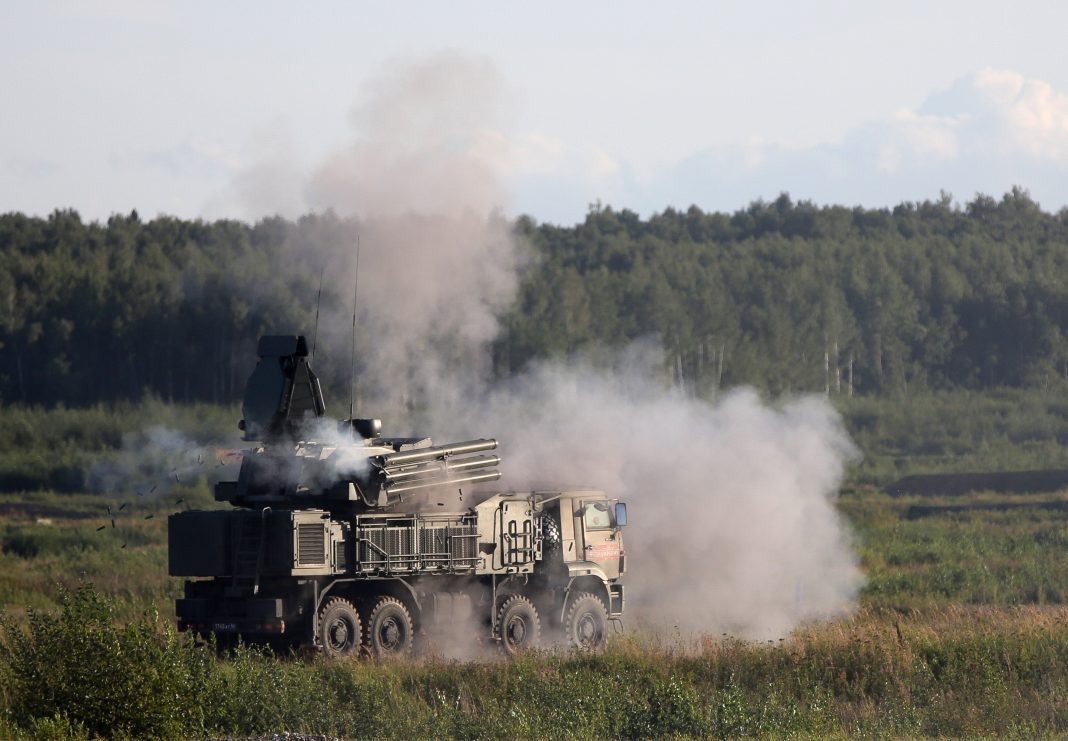In a major military development, Russia has delivered advanced Pantsir-S1 and Buk-M2E air defense systems to Venezuela. This delivery marks a significant upgrade to Caracas’ military capabilities, coming amid rising tensions between Venezuela and the United States. The transport of these systems reportedly involved Russian Il-76 cargo aircraft, with some flights linked to sanctioned Russian carriers. These deliveries reinforce Moscow’s long-standing role as a key military partner to Venezuela.
Moscow Strengthens Venezuela’s Pantsir-S1 Air Defenses Amid Rising Tensions
The Pantsir-S1 is a short- to medium-range air defense system designed to target drones, helicopters, low-flying aircraft, and cruise missiles. It combines twin 30mm autocannons with 12 ready-to-launch 57E6 surface-to-air missiles and uses a radar-optical system to track and intercept multiple targets within 20 kilometers and up to 15 kilometers in altitude. This makes the Pantsir-S1 highly versatile and effective.
Alongside the Pantsir-S1, the Buk-M2E system provides medium-range coverage, engaging targets up to 45 kilometers away and 25 kilometers high. Together, they strengthen Venezuela’s layered air defenses, complementing Russian-supplied S-300VMs for long-range protection and Su-30MK2 fighter jets for rapid interception.
The deployment of Pantsir-S1 and Buk-M2E significantly boosts the protection of critical infrastructure, military bases, and urban areas. It also highlights Moscow’s ongoing support for Venezuela’s military capabilities, signaling a strong defense partnership between the two nations.
Speculation Surrounds Possible Wagner Group Involvement in Pantsir-S1 Operations
While the arrival of Pantsir-S1 systems represents a major upgrade for Venezuela’s military, there is speculation that Russian private military contractors, such as the Wagner Group, could play a role in operating or overseeing the deployment of these advanced weapons. Wagner-affiliated personnel have reportedly been involved in past military operations in Venezuela, raising questions about whether they could initially assist in operating the Pantsir-S1 systems.
If foreign contractors are involved, the Pantsir-S1 systems could be operated under their supervision until Venezuelan personnel complete the necessary training. Operating the Pantsir-S1 requires specialized knowledge of radar systems, targeting software, and missile launch protocols. Having experienced personnel oversee the systems ensures that Venezuela can quickly achieve operational capability while its own military develops proficiency.
The involvement of contractors like Wagner could also allow for more flexibility in the deployment of Pantsir-S1 systems. They could be positioned to cover high-priority areas or mobile assets, providing a rapid response capability to emerging threats. This arrangement also helps Moscow maintain a level of influence over Venezuela’s use of these advanced defense assets.
U.S. Military Presence in the Caribbean Heightens Regional Tensions
The deployment of advanced air defense systems coincides with increased U.S. military activity in the Caribbean. The U.S. Navy has deployed the USS Gerald R. Ford, its largest aircraft carrier, along with at least nine other warships. This show of force is part of broader U.S. operations to counter perceived threats in the region, including drug trafficking and potential Venezuelan military provocations.
In response, Russian officials have hinted at the possibility of supplying additional advanced weapons to Venezuela, such as Oreshnik ballistic missiles and Kalibr cruise missiles. These deliveries, combined with the newly deployed air defense systems, further strengthen Venezuela’s defensive posture and could significantly complicate regional military calculations.
The delivery underscores the deepening military cooperation between Moscow and Caracas. With these sophisticated systems now in place, Venezuela’s air defenses are far more capable of countering modern aerial threats. Observers note that their presence could change how military planners in the region assess risks, given the ability to track and intercept multiple targets rapidly.
By bolstering its air defense capabilities with the Pantsir-S1, Venezuela signals its intent to strengthen national security amid a complex geopolitical environment, while Moscow demonstrates its commitment to supporting allied nations with advanced military technology.

